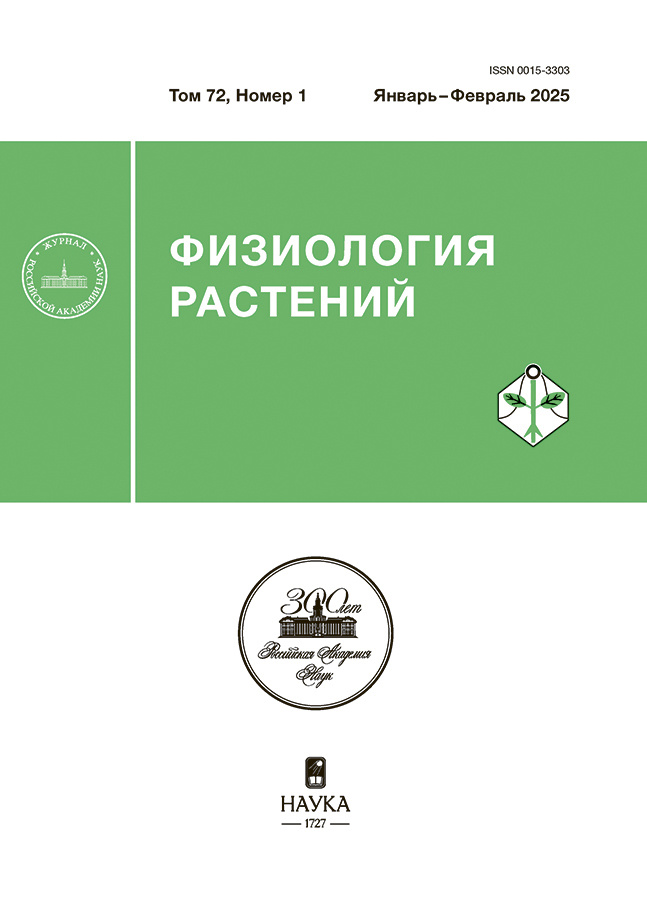Оптимизация методики подготовки антоциансодержащих экстрактов растительных образцов для количественного определения содержания пероксида водорода хемилюминесцентным методом
- Autores: Силина Е.В.1, Малышев Р.В.1, Захожий И.Г.1
-
Afiliações:
- Коми научный центр Уральского отделения Российской академии наук
- Edição: Volume 72, Nº 1 (2025)
- Páginas: 70-76
- Seção: МЕТОДЫ ИССЛЕДОВАНИЯ
- URL: https://ruspoj.com/0015-3303/article/view/685707
- DOI: https://doi.org/10.31857/S0015330325010079
- EDN: https://elibrary.ru/KKFKEJ
- ID: 685707
Citar
Texto integral
Resumo
В работе представлены результаты оптимизации процедуры подготовки проб экстрактов растительных образцов с высоким содержанием антоцианов для проведения количественного определения пероксида водорода хемилюминесцентным методом. Антоцианы относятся к фенольным соединениям, которые обладают высокой химической активностью и способны вступать в реакции с АФК, в том числе Н2О2. На примере листьев растений Laсtuca sativa L. и Ajuga reptans L. с высоким содержанием антоцианов установлено, что для удаления фенольных соединений из экстрактов листьев необходима их предварительная обработка поливинилполипирролидоном (ПВПП) в количестве не менее 7.5% от объема экстракта. Оценен оптимальный временной диапазон экспозиции растительных экстрактов с ПВПП. Удаление фенольных соединений из анализируемых растворов позволяет минимизировать влияние антоцианов на разложение Н2О2, что повышает репрезентативность данных о содержании Н2О2 в растительных образцах.
Texto integral
Sobre autores
Е. Силина
Коми научный центр Уральского отделения Российской академии наук
Autor responsável pela correspondência
Email: silina@ib.komisc.ru
Институт биологии
Rússia, СыктывкарР. Малышев
Коми научный центр Уральского отделения Российской академии наук
Email: silina@ib.komisc.ru
Институт биологии
Rússia, СыктывкарИ. Захожий
Коми научный центр Уральского отделения Российской академии наук
Email: silina@ib.komisc.ru
Институт биологии
Rússia, СыктывкарBibliografia
- Asada K. Production and scavenging of reactive oxygen species in chloroplasts and their functions // Plant Physiol. 2006. V. 141. P. 391–396. https://doi.org/10.1104/pp.106.082040
- Moller I.M. Plant mitochondria and oxidative stress: electron transport, NADPH turnover, and metabolism of reactive oxygen species // Annu. Rev. Plant Physiol. Plant Mol. Biol. 2001. V. 52. P. 561–591. https://doi.org/10.1146/annurev.arplant.52.1.561
- Smirnoff N., Arnaud D. Hydrogen peroxide metabolism and functions in plants // New Phytol. 2019. V. 221. P. 1197–1214. https://doi.org/10.1111/nph.15488
- Neill S., Desikan R., Hancock J. Hydrogen peroxide signalling // Curr. Opin. Plant Biol. 2002. V. 5. P. 388–395. https://doi.org/10.1016/S1369-5266(02)00282-0
- Dat J.F., Pellinen R., Beeckman T., Van De Cotte B., Langebartels C., Kangasjarvi J., Inze D., Van Breusegem F. Changes in hydrogen peroxide homeostasis trigger an active cell death process in tobacco // Plant J. 2003. V. 33. P. 621–632. https://doi.org/10.1046/j.1365-313X.2003.01655.x
- Mhamdi A., Van Breusegem F. Reactive oxygen species in plant development // Development. 2018. V. 145. Art. dev164376. https://doi.org/10.1242/dev.164376
- Foyer C.H., Noctor G. Oxygen processing in photosynthesis: regulation and signalling // New Phytol. 2008. V. 146. P. 359–388. https://doi.org/10.1046/j.1469-8137.2000.00667.x
- Sharova E., Smolikova G., Medvedev S. Determining hydrogen peroxide content in plant tissue extracts // Russ. J. Plant Physiol. 2024. V. 70. P. 216. https://doi.org/10.1134/S1021443724603744
- Warm E., Laties G.G. Quantification of hydrogen peroxide in plant extracts by the chemiluminescence reaction with luminol // Phytochemistry. 1982. V. 21. P. 827–831.
- Queval G., Hager J., Gakiere B., Noctor G. Why are literature data for contents so variable? A discussion of potential difficulties in the quantitative assay of leaf extracts // J. Exp. Bot. 2008. V. 59. P. 135–146. https://doi.org/10.1093/jxb/erm193
- Perez F., Rubio Vargas S. An improved chemiluminescence method for hydrogen peroxide determination in plant tissues // Plant Growth Regul. 2006. V. 48. P. 89–95. https://doi.org/10.1007/s10725-005-5089-y
- Любимов В.Ю., Застрижная О.М. Роль пероксида водорода в фотодыхании // Физиология растений. 1992. Т. 39. С. 701–710.
- Veljovic-Jovanovic S., Noctor G., Foyer C.H. Are leaf hydrogen peroxide concentrations commonly overestimated? The potential influence of artefactual interference by tissue phenolics and ascorbate // Plant Physiol. Biochem. 2002. V. 40. P. 501–507. https://doi.org/10.1016/S0981-9428(02)01417-1
- Rice-Evans C., Miller N., Paganga G. Antioxidant properties of phenolic compounds // Trends Plant Sci. 1997. V. 2. P. 152–159. https://doi.org/10.1016/S1360-1385(97)01018-2
- Bi X., Zhang J., Chen C., Zhang D., Li P., Ma F. Anthocyanin contributes more to hydrogen peroxide scavenging than other phenolics in apple peel // Food Chem. 2014. V. 152. P. 205–209. https://doi.org/10.1016/j.foodchem.2013.11.088
- Mattioli R., Francioso A., Mosca L., Silva P. Anthocyanins: a comprehensive review of their chemical properties and health effects on cardiovascular and neurodegenerative diseases // Molecules. 2020. V. 25. Art. 3809. https://doi.org/10.3390/molecules25173809
- Lee J., Durst R.W., Wrolstad R.E. Determination of total monomeric anthocyanin pigment content of fruit juices, beverages, natural colorants, and wines by the pH differential method: collaborative study // J. AOAC Int. 2005. V. 88. P. 1269–1278. https://doi.org/10.1093/jaoac/88.5.1269
- Malyshev R.V., Silina E.V. Luminometer: principle of operation, device, and recommendations for assembly // Instrum. Exp. Tech. 2023. V. 66. P. 476–482. https://doi.org/10.1134/S0020441223020203
- Ranatunge I., Adikary S., Dasanayake P., Fernando C.D., Soysa P. Development of a rapid and simple method to remove polyphenols from plant extracts // Int. J. Anal. Chem. 2017. V. 2017. Art. 7230145. https://doi.org/10.1155/2017/7230145
- Vetoshkina D.V., Pozdnyakova-Filatova I.Y., Zhurikova E.M., Frolova A.A., Naydov I.A., Ivanov B.N., Borisova-Mubarakshina M.M. The increase in adaptive capacity to high illumination of barley plants colonized by rhizobacteria. P. putida BS3701 // Appl. Biochem. Microbiol. 2019. V. 55. P. 173–181. https://doi.org/10.1134/S0003683819020133
Arquivos suplementares













